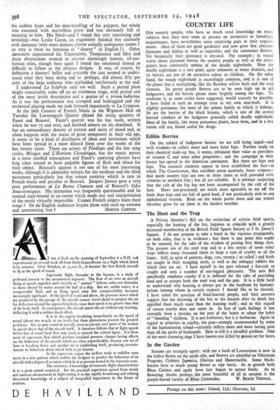COUNTRY LIFE
OUR country people; who have so much rural knowledge on many subjects that they may seem to possess an instinctive or hereditary acquaintance, have nevertheless some surprising gaps in their acquire- ments. Most of them are good gardeners and now grow fine chrysan- themums and dahlias as well as vegetables and the commoner flowers. Yet botanically their ignorance is abysmal. For example ; in recent scares about poisoned berries the country people as well as the news- papers have continually spoken of the deadly nightshade. Now the deadly nightshade is a rare plant, quite unknown in many districts, and its berries are not of an attractive colour to children. On the other hand, the woody nightshade is exceedingly common, and it is one of the plants that is multiplying, like the Rosebay willow herb and the wild clematis. Its pretty purple flowers are to be seen high up in tall hedgerows, and the berries gleam more brightly among the hips. To eradicate it, as some critics have suggested, would scarcely be possible. I have failed at such an attempt even in my own rose-beds. It is slightly poisonous like most of the potato family to which it belongs. So are the berries of the black bryony, which is one of the several berried climbers of the hedgerow generally called deadly nightshade. Most of the family, like many poisonous plants, have been, and to a less extent still are, found useful for drugs.


































 Previous page
Previous page